Check Out How 100 Artists Turned Prayagraj Into India’s First ‘Street Art City’
The task was to identify walls, bridges, buildings, water tanks and other structures, which could host wall art and transform the place into India’s first-ever street art city!

On my first trip to Allahabad (now Prayagraj) in June 2018, I was struck by the city’s aesthetics – and sometimes by a lack thereof. I noticed that the city had a collection of heritage buildings with envious gothic, art deco architecture, some of which stood in a state of neglect and disrepair.
The growing population, however, seemed to blend with this backdrop. While Delhi had moved on the “next generation” lighter versions, rickshaws in Prayagraj still had a hand-painted visual style reminiscent of the halcyon days.
The Prayagraj Mela Pradhikaran plans and executes the Kumbh Mela. It invited creative teams to share ideas for the largest-ever street art initiative – Paint My City. The task was to identify walls, bridges, buildings, water tanks and other structures, which could host wall art and transform the place into India’s first-ever street art city!
To say that it looked like an uphill battle was an understatement. Monsoons were soon to arrive, and that meant most of the coming months would be wet, slushy and messy.
As a city, barring some newer apartment complexes in the Civil Lines area and the iconic Indira Bhawan, Prayagraj does not have many tall buildings. Delhi Street Art was at the forefront of bringing together public art and artists since 2013, and took up the gauntlet and started exploring and surveying Prayagraj.
The City in Flux
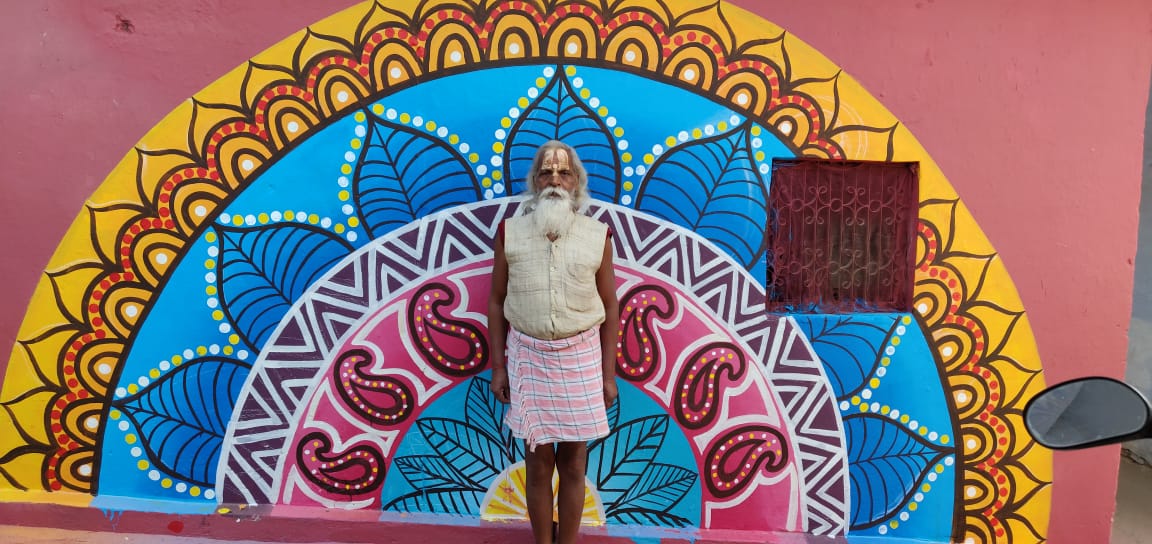
In preparation of the mela, roads were being expanded, new street lamps were being erected, and the frenzy of new construction activity was all around. Frequent traffic snarls and frayed tempers and clouds of dust engulfed the city. Sceptic locals expressed dismay at the inconveniences and wondered when the city would return to normalcy.
Prayagraj can be thought of as a city of five major parts—Civil Lines and new city across the Allahabad train junction; Chowk and old city on the other side of station; Triveni Ghat and Sangam area between rivers Ganga and Yamuna; Naini and Arail Ghats, west of Yamuna banks; and Jhunsi area across the Ganga.
Well, at least that’s how we split up the city to plan our initiatives.
Civil Lines

Here, we picked walls around PCDA colony (Principal Controller of Defence Accounts) – sometimes just called Pension Colony – to represent river life and the daily interactions with sadhus.
Nearby, we located an ideal wall to portray renowned Prayagraj-born poet Harivansh Rai Bachchan with his poetry. Not very far, we selected the Kacheri Building in Katra to depict portraits of Atal Bihari Vajpayee and Dr A P J Abdul Kalam.
The Allahabad Junction became a massive hub of creative artwork, including platform walls, city-facing buildings, overhead water tanks, foot-over-bridges and waiting halls.
#GangaStory

A brand new flyover was being built near the iconic High Court building. We picked the large pillars and walls of the parapet to depict the journey of river Ganga from Gomukh to Gangotri, and on to major cities along the way. Various birds and animals thrive along the river, including dolphins, turtles, crocodiles, Sting Ray fish, eagles, with creative canvas homes for them all along the flyover.
#IndiraBhawan
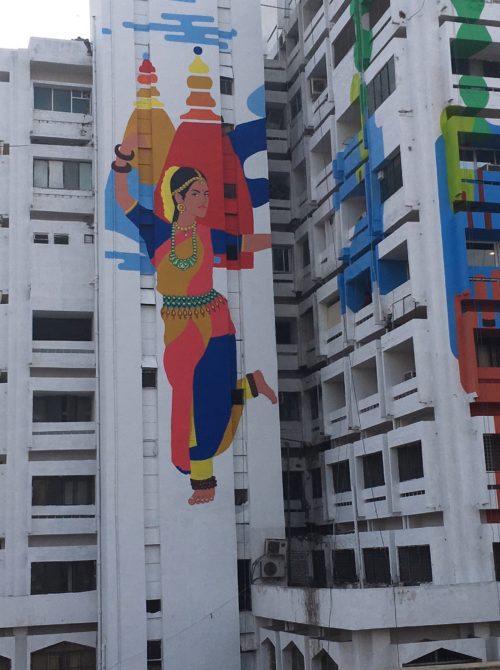
It is one of the most central buildings of Civil Lines, at the intersection of MG Road and Sardar Patel Marg. It also happens to be one of the most neglected buildings with years of garbage piled up on its window sills and balconies.
The Allahabad Development Authority was very keen to give this building a makeover. Yuva Foundation and Nerolac Paints were ready to partner with us for this initiative.
We came up with a design that would do justice to the tall structure, its multiple openings and structural elements. The theme selected was city life, including elements of the Kumbh, the rivers, local art and culture, as well as natural flora and fauna.
As the winter winds blew, the artworks took shape—one wall at a time. Artists spent hours each day sketching, painting and finishing the designs. Within a few weeks, the building was practically unrecognisable.
#PontoonPark
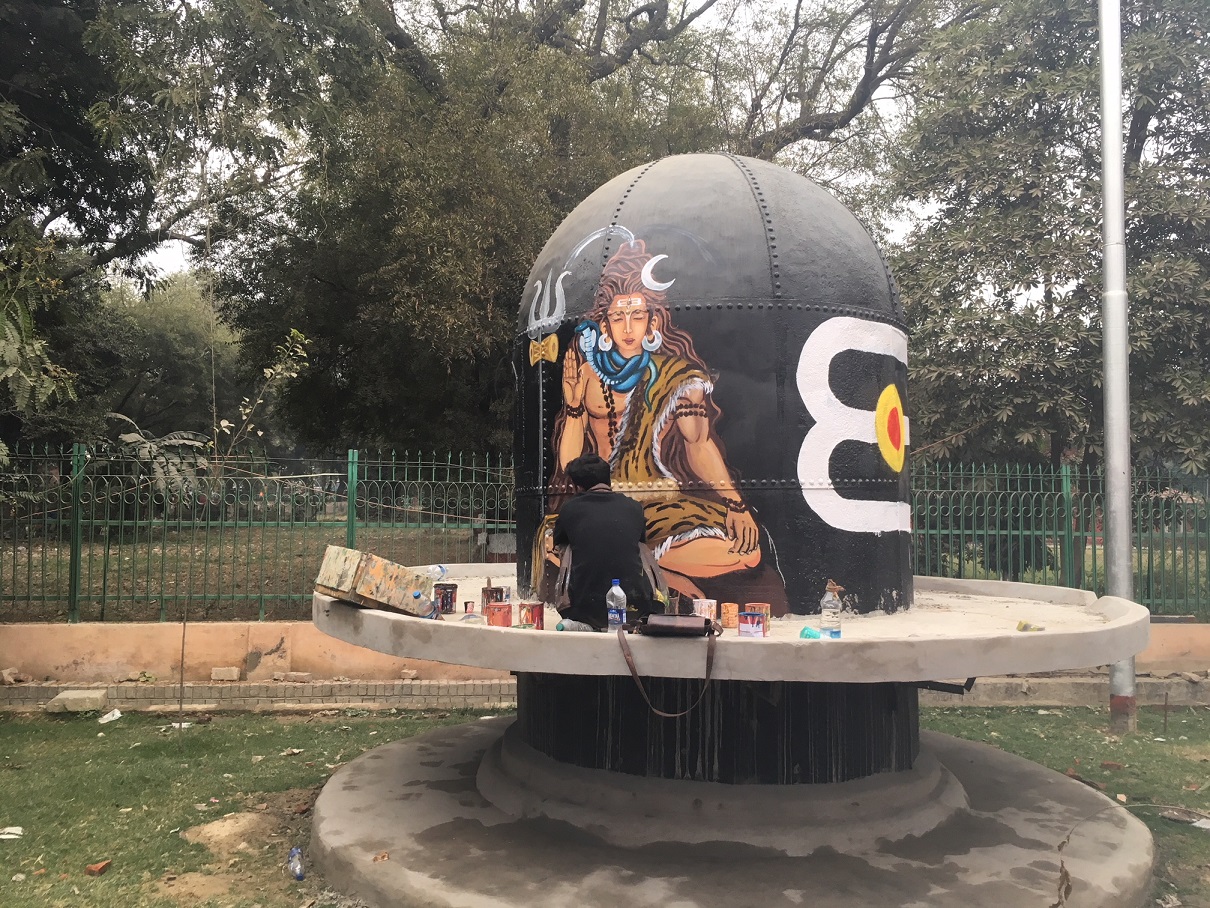
Right along MG Road, brand new walking paths and landscaped gardens were being planned on the spaces reclaimed from demolishing illegal constructions. I had an idea—to take a dozen or so old pontoons, chop them in half and create Shiv Ling installations, depicting various mudras (poses) and moods of Shiva!
We discovered that being submerged in rivers for long added layer upon layer of crusty corrosion and metal pitting to many pontoons. This had to be scraped off and a protective undercoat applied before the surface could be ready for any artwork.
#DevotionStreet
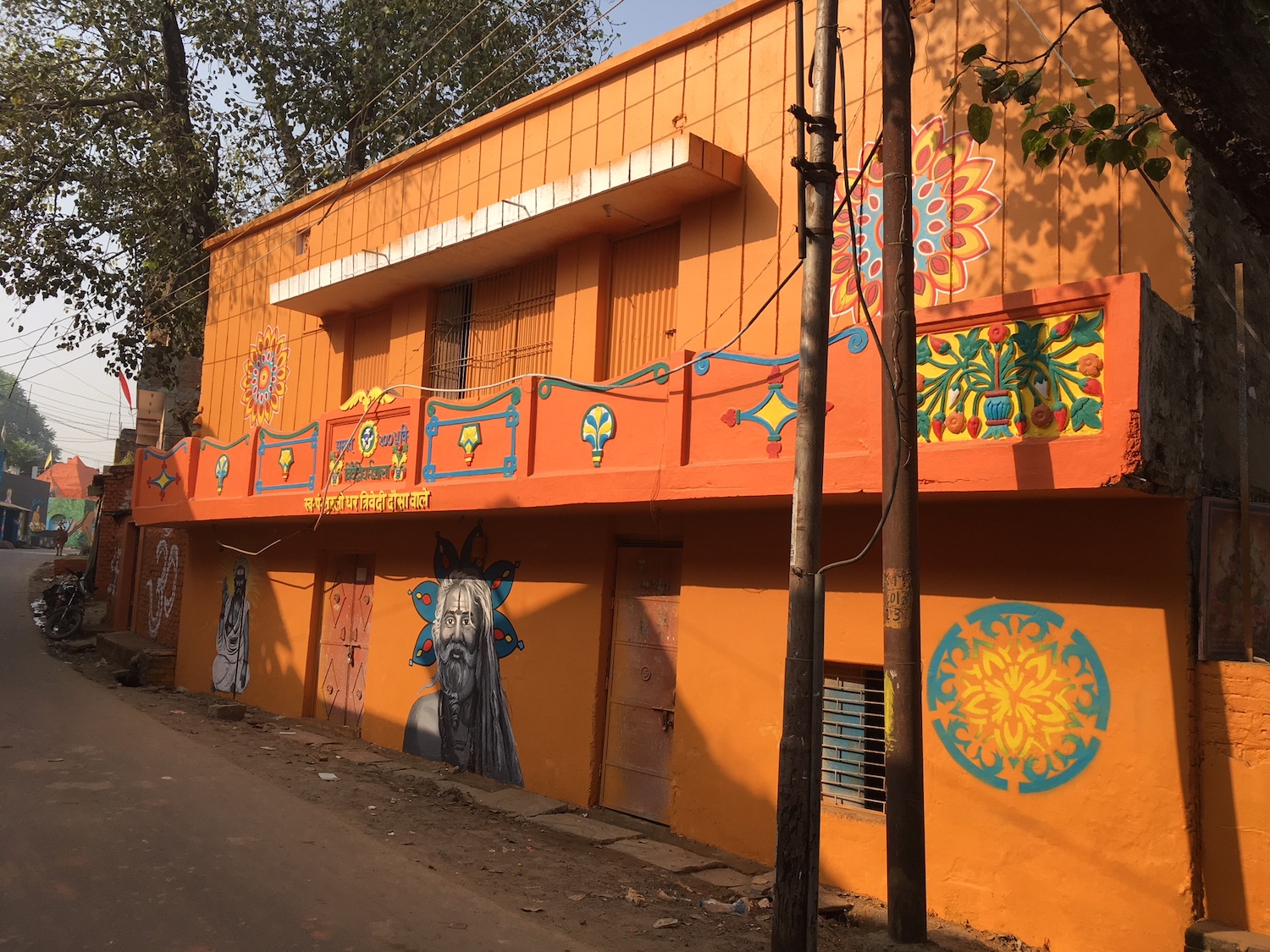
Prayagraj is famous for its ashrams, mutts and akhaadas. We were fortunate enough to give Niranjani and Nirmal Akhaada colourful makeovers. Additionally, we adorned the walls of Shiv Ganga Ashram and others along Ganga at Jhunsi.
What started as an effort to artistically restore a few ashrams, soon turned into an all-out effort to adorn an entire street of ashrams, yoga and meditation centres.
Also Read: For 7 Decades, This Man’s Family Has Reunited Those Lost at Kumbh With Their Loved Ones!
The entire Arail area began to be referred to as the “Devotion Street” as the artworks further enhanced the monicker. The Naini Train Station nearby and its several walls shone in saturated colours and rich hues.
#AkshayVat

At the entrance of the old fort built by Akbar is a small passage to Akshay Vat (immortal tree) and the Pataal Puri temple. During the 45-year construction of the fort beginning in 1576, access to this tree and the adjoining Saraswati Koop (well) was closed off and remained so during the British rule as well as post-Independence.
A new passage was specially constructed with the Kumbh in mind, and the public was finally able to revisit these historical sites. Special attention was paid to ensure a smooth, orderly passage of people, including access for disabled visitors.
Inspired by the sculptures of deities like Ganga, Yamuna, Saraswati and thee sage Markandey from the nearby underground temple, we decided to depict wall art on the entrance walls along with a large representation of the immortal tree.
Water Tanks

The tall, overhead water tanks, some around the train stations, were built during the British period. In fact, a few new ones were constructed just in time for the Kumbh Mela. It was too tempting a canvas to ignore as we went about painting the city.
Large sparrows, floral designs and even imposing portraits like those of Sardar Patel, soon materialised on these cloud-seeking towers.
Rickshaw Walls

The classic rickshaws may no longer have the monopoly on hand-painted public art, but they surely have a colourful gallery of their own! The rickshaw-style artwork at the waiting halls of the main railway junction is our humble tribute to the local artists and their design skills.
If ever an Indian city was completely transformed in a few months, this has to be it! In addition to the new well-lit roads, sidewalks, flyovers, landscaped gardens, sculptures, murals and installations, Prayagraj now boasts of the largest number of street artwork anywhere in the country—covering over five lakh sq ft. It truly has become India’s first ever #streetartcity!
Our team of over a hundred artists came from cities across the country, including Delhi, Lucknow, Kanpur, Prayagraj, Varanasi, Chennai, Bengaluru, Mysuru, as well as from London and Moscow.
All artists, while happy to be compensated for their efforts, were even more excited about the opportunity to be in an artful environment as a part of a historic transformation.
You May Also Like: Indian Railways Gives Stunning Makeover to Prayagraj Stations. Check Out Pics!
We were assisted by countless others including designers, drivers delivering our supplies, technicians erecting scaffoldings, cleaning crew, cooks, staff that helped keep our apartments organised and safe, corner chai and samosa shops and ordinary city folk offering (often unsolicited) advice, opinions and feedback.
We are proud to have made a difference and hope efforts will continue to maintain and enhance the Prayagraj’s unique aesthetics.
Here are a few more scenes from the city:
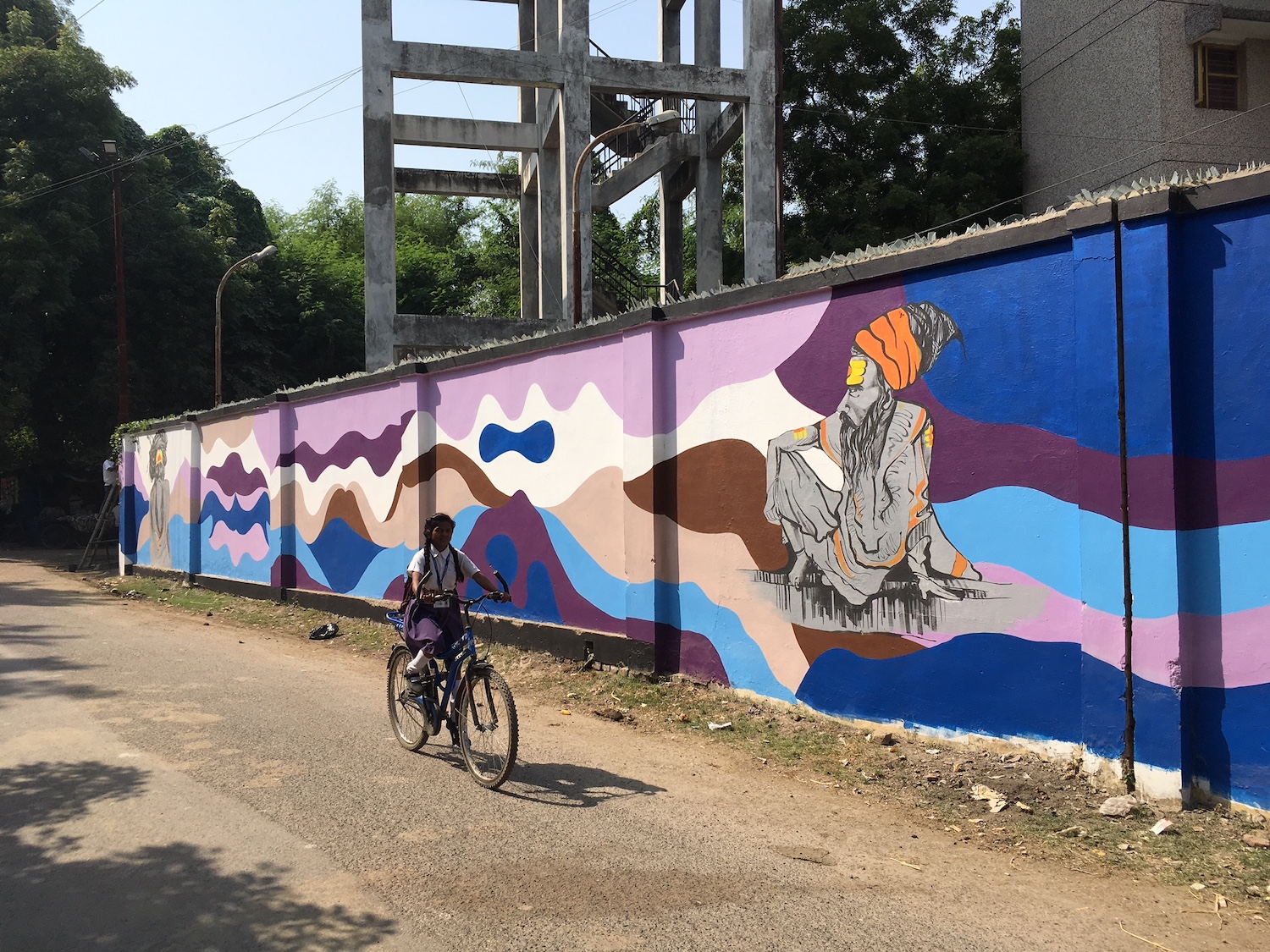


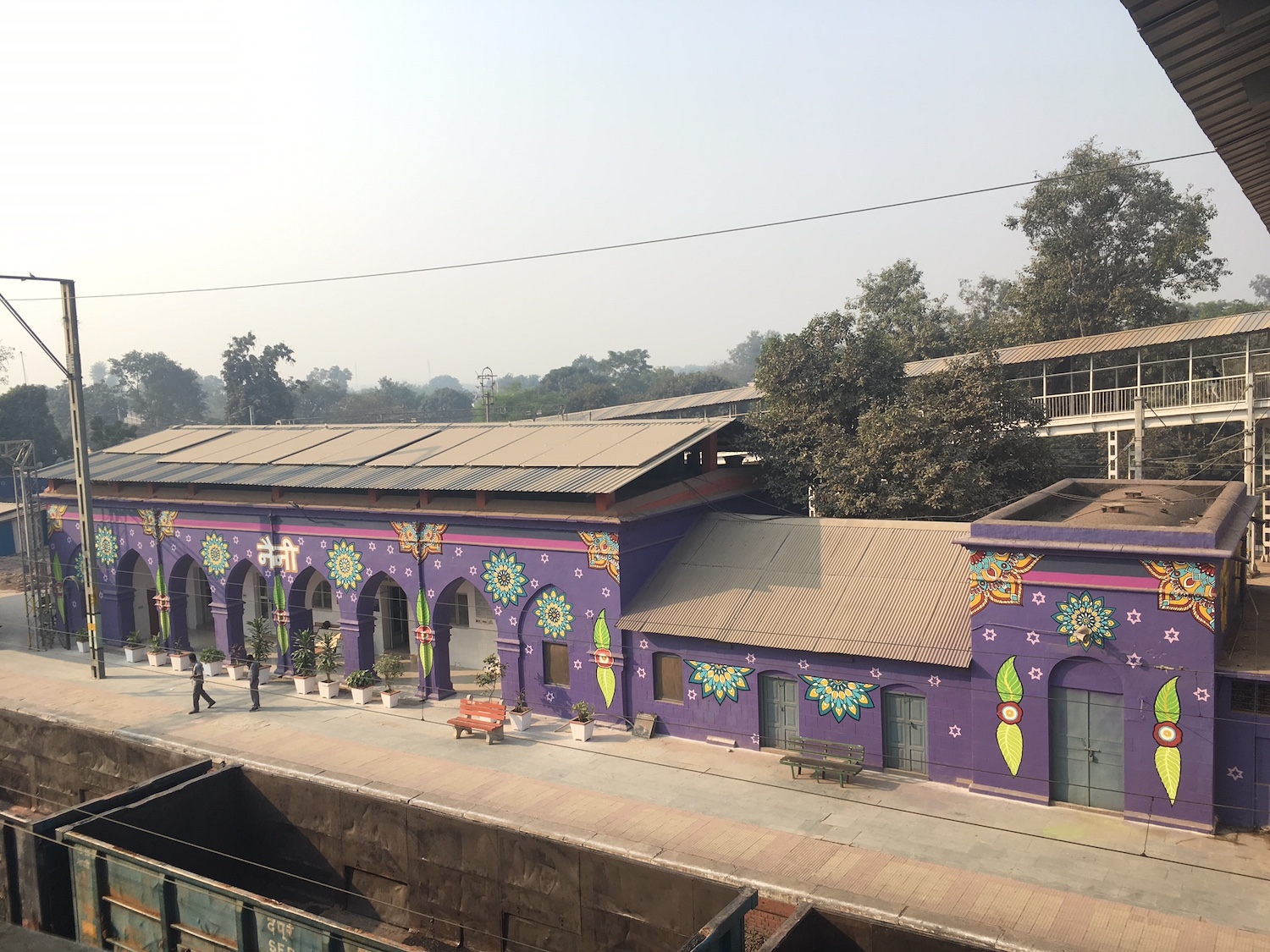


(Written by Yogesh Saini and edited by Shruti Singhal)
Like this story? Or have something to share?
Write to us: [email protected]
Connect with us on Facebook and Twitter.
If you found our stories insightful, informative, or even just enjoyable, we invite you to consider making a voluntary payment to support the work we do at The Better India. Your contribution helps us continue producing quality content that educates, inspires, and drives positive change.
Choose one of the payment options below for your contribution-
By paying for the stories you value, you directly contribute to sustaining our efforts focused on making a difference in the world. Together, let’s ensure that impactful stories continue to be told and shared, enriching lives and communities alike.
Thank you for your support. Here are some frequently asked questions you might find helpful to know why you are contributing?


This story made me
-
97
-
121
-
89
-
167











